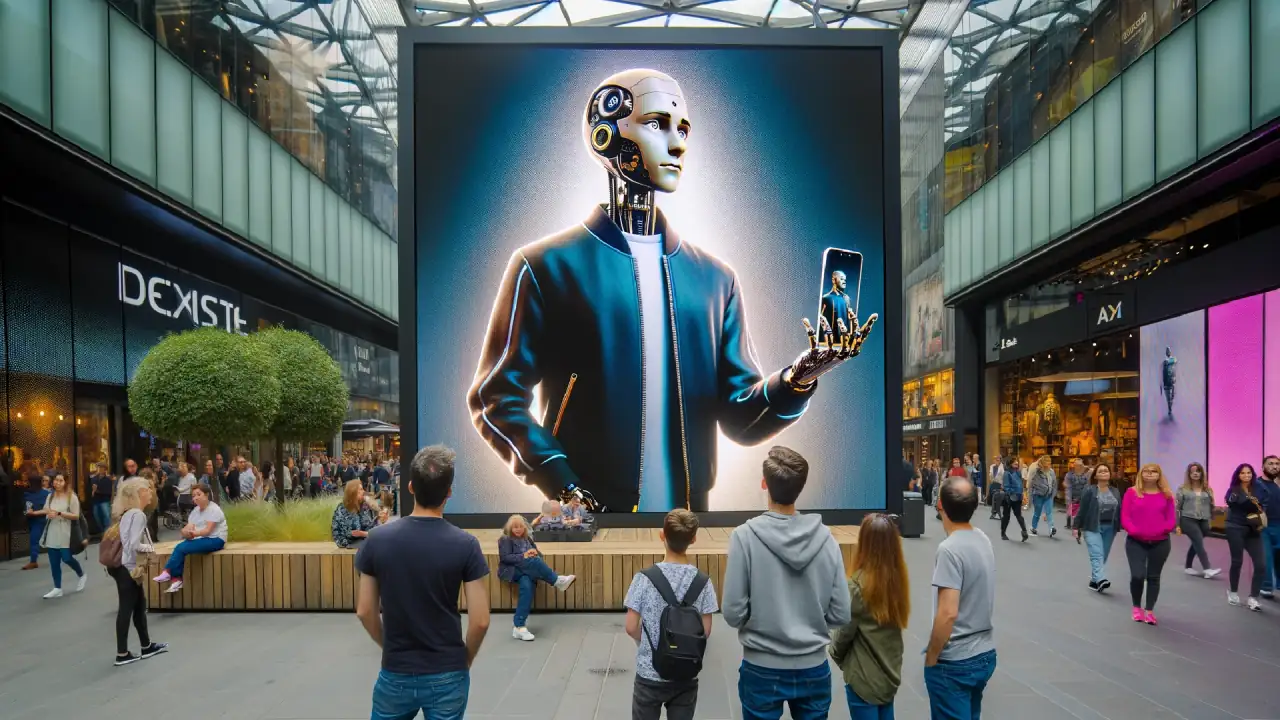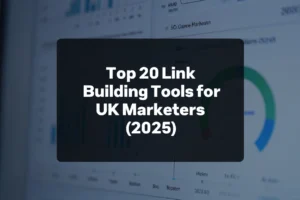It’s happening: the rapid rise of AI-generated ads is changing the face of marketing. Once the realm of skilled copywriters, the advertising world is now being overtaken by artificial intelligence, with AI writing more and more of the ads that flood our screens daily. In fact, as we look to the future, it’s becoming increasingly clear that manual copywriting, as we know it, may be on its way out.
Why is this happening? And what does it mean for the future of copywriting, advertising, and even the businesses that rely on these services? This article will break down 15 compelling statistics that highlight how AI is taking over the world of advertising—and why manual copywriting is no longer the dominant force.
AI and the Changing Advertising Landscape
The rise of AI in advertising has already been underway for years, but it’s now reaching a point where its impact is undeniable. AI technology, including tools like GPT-3 and GPT-4, is increasingly capable of writing high-quality, engaging ad copy that rivals—or even exceeds—the work of human copywriters in terms of speed, scalability, and cost-efficiency.
Why AI-Generated Ads Are Gaining Traction
There are a few key reasons why AI-generated ads are taking the lead in the industry:
- Speed and Efficiency: AI can create ad copy in seconds, making it possible for brands to launch campaigns much faster than relying on human copywriters.
- Cost-Effectiveness: Hiring skilled copywriters can be expensive, particularly for businesses that require large volumes of content. AI helps reduce costs, making it a more accessible option.
- Personalization: AI can analyze vast amounts of data to create highly personalized ads that resonate with target audiences.
- Scalability: AI can generate ads across multiple platforms and formats without the need for additional resources, making it scalable for companies of all sizes.
The Transition from Manual Copywriting to AI
Over the last decade, AI-powered ad generation has gone from a novelty to a necessity. Companies across industries have begun to adopt AI for generating not just headlines and product descriptions, but also entire marketing campaigns. As AI becomes more adept at crafting persuasive, attention-grabbing copy, the reliance on human writers to produce ads has decreased.
In 2025, AI-generated ads will be at the forefront of digital marketing, and manual copywriting will continue to lose ground.
15 Statistics That Prove AI Is Taking Over Advertising
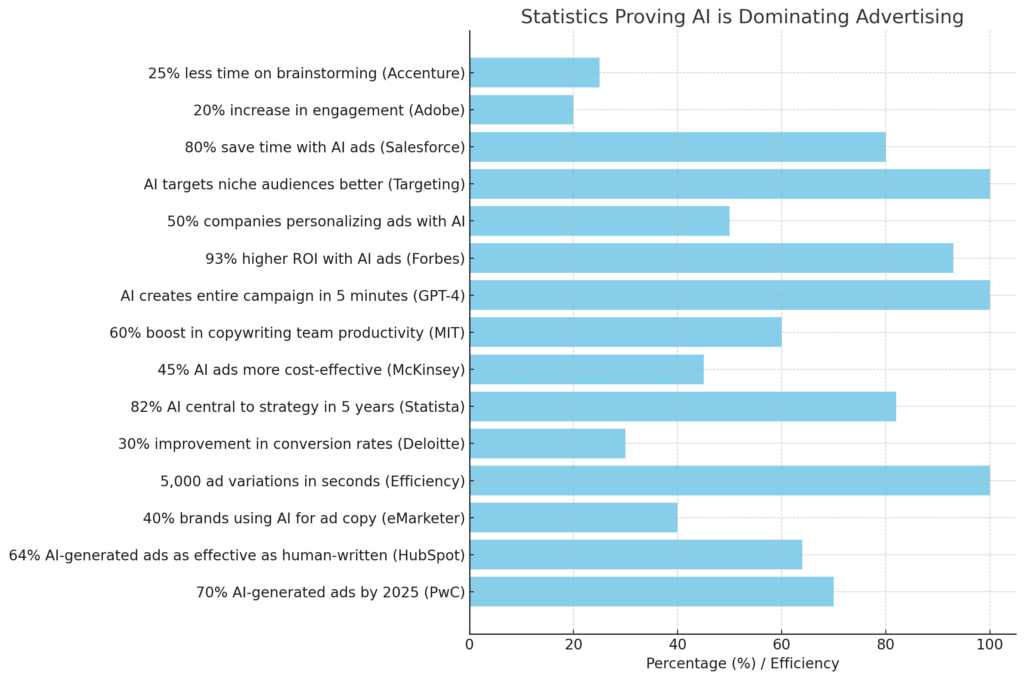
The statistics below provide a clear picture of how AI-generated ads are gaining traction and why manual copywriting is no longer as dominant as it once was.
1. AI is expected to create 70% of digital ads by 2025.
According to a report by PwC, AI is set to generate 70% of all digital ads in the next few years, signaling a massive shift in how companies approach ad creation.
2. 64% of marketers say AI-generated ads are just as effective as human-written ads.
A survey by HubSpot revealed that nearly two-thirds of marketers believe AI-generated ads are as impactful and persuasive as traditional, manually written ads.
3. 40% of brands now use AI to write or assist in creating ad copy.
A report from eMarketer shows that nearly 4 in 10 brands are already leveraging AI technology to write ad copy, underscoring how widespread AI adoption has become in the advertising industry.
4. AI can generate up to 5,000 variations of an ad in a fraction of the time.
AI-powered tools like Persado and Copy.ai can produce multiple versions of an ad copy in seconds, whereas manual copywriting may take hours to develop just one version. This efficiency is driving the rise of AI-generated ads.
5. AI-generated ads lead to a 30% improvement in conversion rates for some businesses.
Research by Deloitte has shown that businesses using AI for ad copy generation have experienced a 30% improvement in conversion rates, as AI can produce content that resonates better with target audiences.
6. 82% of digital advertisers believe AI will be central to their advertising strategy within 5 years.
According to a survey by Statista, over 80% of advertisers recognize that AI will play a central role in their advertising efforts by 2030, further pushing manual copywriting to the sidelines.
7. 45% of advertisers report that AI-generated ads are more cost-effective than manual copywriting.
Data from McKinsey indicates that nearly half of advertisers find AI-generated ads to be more affordable than traditional manual copywriting, primarily due to reduced labor costs and faster turnaround times.
8. AI tools can increase the productivity of a copywriting team by 60%.
By automating repetitive tasks, AI tools allow human copywriters to focus on more complex tasks, leading to a 60% increase in overall productivity, according to research from MIT.
9. AI can produce an entire ad campaign with just a few keywords in under 5 minutes.
AI systems like GPT-4 are capable of generating complete ad campaigns, including multiple variations of copy and design, based on just a few input keywords. This is impossible for human copywriters to replicate at such speed.
10. 93% of businesses that use AI for ads report a higher return on investment (ROI).
A study from Forbes revealed that businesses leveraging AI for ad generation saw a dramatic improvement in ROI, proving the financial benefits of using AI in advertising.
11. Over 50% of companies use AI to personalize their ads at scale.
AI allows businesses to craft personalized ads for different segments of their audience, resulting in better engagement and improved conversion rates. Personalized ads created by AI are now the norm for most digital ad campaigns.
12. AI-generated ads can target niche audiences more effectively than manual copywriting.
AI excels at analyzing user data and targeting specific demographics with hyper-relevant content, allowing brands to better reach their intended audience.
13. 80% of marketing teams report that AI saves them time.
As reported by Salesforce, 80% of marketing teams claim that using AI tools saves them considerable time in generating ad content, allowing for faster deployment of campaigns.
14. AI-generated ads have shown a 20% increase in engagement for online retailers.
A study by Adobe found that online retailers using AI to create ad content saw a 20% increase in customer engagement, a statistic that shows the power of AI in driving consumer interest.
15. Companies that use AI for ads see a 25% reduction in time spent on creative brainstorming.
According to research from Accenture, companies using AI for creative ad generation reduce the amount of time spent brainstorming new ideas by 25%, as AI can quickly generate fresh and relevant concepts.
The Shifting Role of Copywriters in the Age of AI
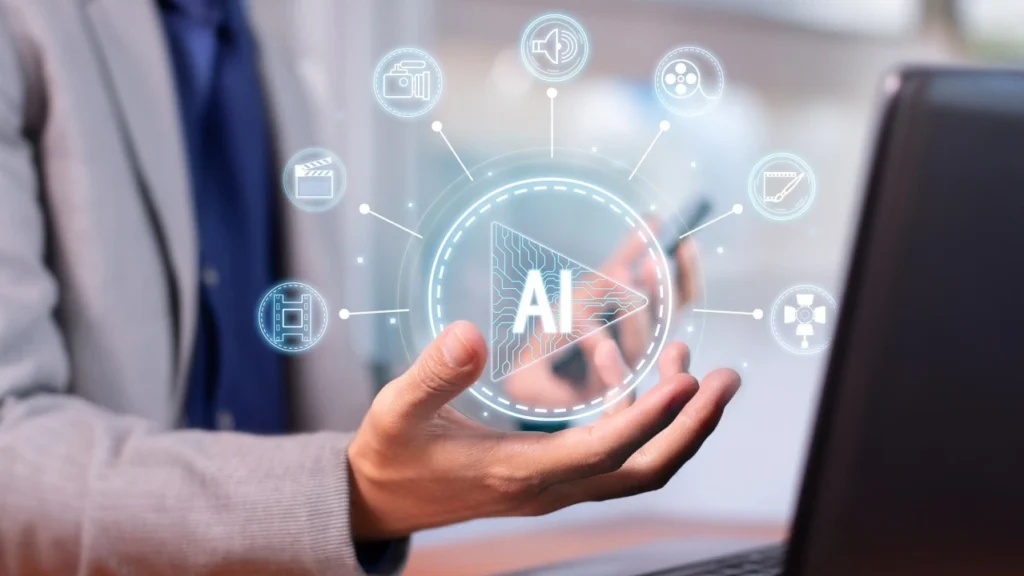
As AI takes over more aspects of ad creation, the role of human copywriters is evolving. While it’s clear that AI is driving efficiency and cost savings, there’s still a place for human creativity in the advertising process. However, the role of copywriters will shift from manual writing to a more strategic position, where they oversee AI-generated content, refine messaging, and ensure that ads meet brand guidelines.
What Does This Mean for the Future of Copywriting?
In the coming years, manual copywriting will not disappear entirely, but it will become less prominent in digital advertising. Copywriters will need to adapt to this new reality by learning how to work with AI tools, ensuring that they are using technology to their advantage. Those who continue to rely solely on traditional copywriting methods may find themselves falling behind in a highly competitive industry.
For businesses, this means reevaluating the way they approach ad content. The future of advertising will be a blend of AI-driven efficiency and human creativity, allowing for rapid, data-driven content creation that resonates with consumers.
The Changing Face of Advertising
As AI continues to evolve, it will inevitably take on a larger share of ad content creation. With its ability to generate multiple ad variations quickly, optimize for target audiences, and drastically reduce costs, AI has proven that it’s here to stay. While the human touch will always be needed for creative, brand-driven elements, the traditional, manual approach to copywriting is being overtaken by the efficiency and scalability of AI.
The rise of AI-generated ads isn’t just a passing trend—it’s a shift in the entire advertising landscape. Businesses that adapt quickly will benefit from faster production times, better targeting, and improved ROI, while those who resist may find themselves left behind.
Key Statistics to Know About AI in Advertising
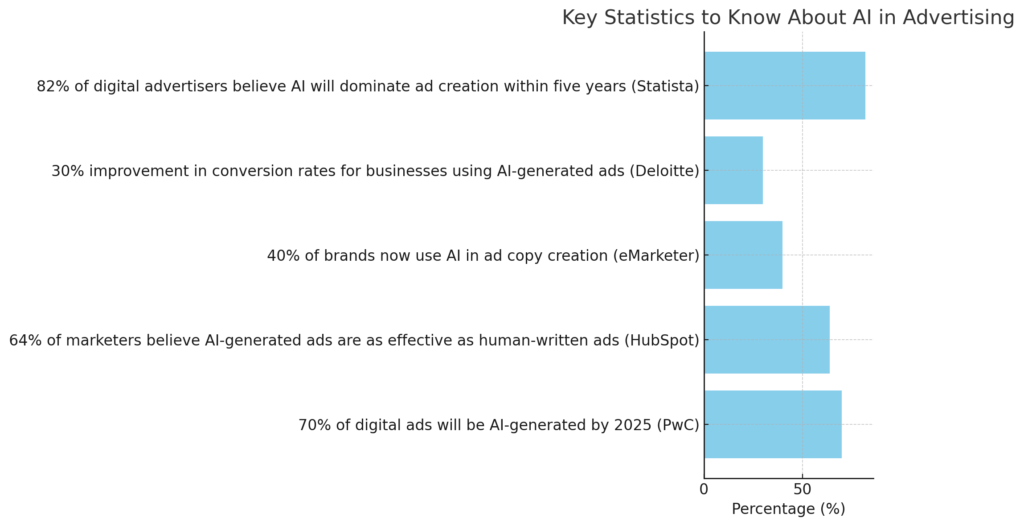
- 70% of digital ads will be AI-generated by 2025 (PwC).
- 64% of marketers believe AI-generated ads are as effective as human-written ads (HubSpot).
- 40% of brands now use AI in ad copy creation (eMarketer).
- 30% improvement in conversion rates for businesses using AI-generated ads (Deloitte).
- 82% of digital advertisers believe AI will dominate ad creation within five years (Statista).
Frequently Asked Questions (FAQs)
1. How does AI generate ads?
AI uses machine learning and natural language processing algorithms to analyze data, predict customer preferences, and create personalized, effective ad copy.
2. Can AI replace human copywriters?
AI can handle many aspects of ad creation, but it will not fully replace human creativity and strategy. Copywriters will focus more on editing, refining, and overseeing AI-generated content.
3. What are the benefits of using AI in advertising?
AI in advertising offers faster content creation, cost savings, increased scalability, and improved personalization, which leads to higher engagement and better ROI.
4. How accurate is AI-generated ad copy?
AI-generated ad copy is highly accurate, especially when it comes to data-driven topics. However, human oversight is necessary for ensuring brand voice and emotional appeal.
5. What does the future hold for advertising and AI?
In the future, AI will continue to play a larger role in ad content generation. The best results will come from a combination of AI efficiency and human creativity, ensuring ads resonate with target audiences.

